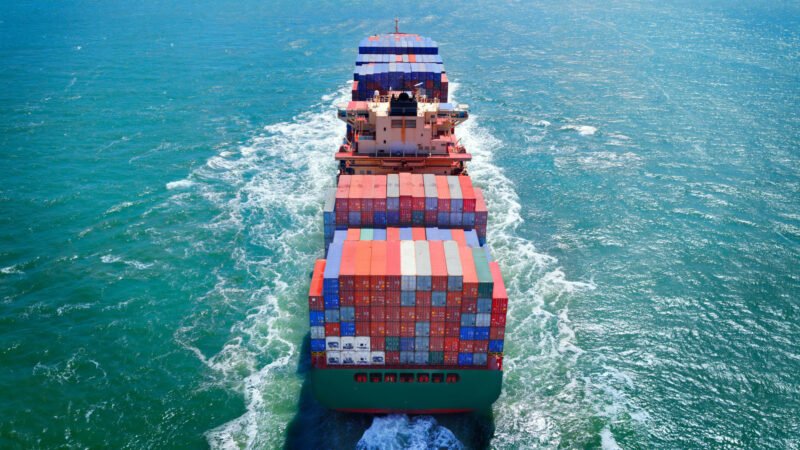The COVID-19 pandemic has caused widespread disruptions to global supply chains, affecting businesses across all industries. As a result, many companies have been forced to adapt their operations significantly to cope with the new reality. One area that has been particularly affected is ocean shipping.
The container shipping industry was already facing pre-pandemic challenges, such as overcapacity and increased rates. Still, the pandemic has exacerbated these issues, leading to even more challenges for businesses that rely on ocean shipping to move their goods. These effects have been felt across the supply chain, from manufacturers to retailers.
To navigate these challenges, it is essential for businesses to have a good understanding of the ocean shipping market and to forecast future trends. This will enable them to make informed decisions about their shipping strategies and adapt their operations accordingly.
Understanding the Modern Complexities of Ocean Container Shipping
Today’s economy is so complex that it can be difficult to fathom. In recent years, the container shipping sector has been plagued with supply shortages, delays, and a backlog of containers. This domino effect has caused a ripple effect on warehouse space availability, labor accessibility, and other crucial aspects of logistics and transportation.
Although there has been some recovery since the pandemic first hit in early 2020, the container shipping market is still facing significant challenges. Some of these challenges include:
Overcapacity: The pandemic has led to a decrease in global trade, which has resulted in a surplus of vessels and containers. This overcapacity has put pressure on shipping rates, increasing business costs.
Supply Shortages: The pandemic has also caused disruptions to the supply of containers, with some ports facing shortages of empty containers. This has made it difficult for businesses to obtain the needed containers, leading to shipment delays.
Increased Rates: The combination of overcapacity and supply shortages has increased ocean shipping rates. This has put pressure on businesses that rely on ocean shipping to move their goods, as they must now contend with higher costs.
These challenges have been further exacerbated by the fact that many businesses are still operating remotely, making it challenging to coordinate and manage supply chains.
Implementing Demand Planning and Forecasting Solutions
Given the challenges that businesses face, it is more important than ever to understand the complexities of ocean shipping and adequately forecast future trends. This can be done through the implementation of demand planning and forecasting solutions.
Demand planning solutions help businesses to understand past trends and develop forecasts for future demand. This enables businesses to make informed decisions about their inventory levels and production plans. Additionally, these solutions can help businesses to identify potential disruptions and adjust their operations accordingly.
Below are just some of the benefits that businesses can enjoy by implementing demand planning and forecasting solutions:
Better Time Management
When you have a clear understanding of your business’s shipping needs, you can make better use of your time and resources. This enables you to focus on other areas of your business, such as marketing and sales, rather than constantly fighting issues with your supply chain.
Stronger Partnerships
Having a good understanding of your shipping requirements enables you to build stronger relationships with your partners and suppliers. When you take the necessary steps to reduce stockouts and delays, you’ll be better equipped to manage your business’s shipping needs and minimize the impact of disruptions for your partners.
Increased Revenue and Reduced Costs
By properly managing your inventory levels and production plans, you can avoid the cost of overproduction and stockouts. Additionally, you can use economies of scale to reduce your overall costs. In turn, this can lead to increased revenue for your business as well as improved profitability.
Effective Ways to Improve Your Forecasting Efforts
Ocean shipping can be difficult for the business to plan for and forecast. However, there are a number of steps that businesses can take to improve their forecasting efforts, such as:
Analyzing Historical Data
One of the most effective ways to understand future trends is to analyze past data. This includes data on factors such as global trade, container utilization, port activity, and more. With a deeper understanding, there are a number of steps that businesses can take to improve their forecasting efforts.
Once you’ve collected and analyzed this data, you can use it to develop trends and forecasts for future demand. While no one can predict the future with 100% accuracy, analyzing historical data can give you a good understanding of what to expect in the months and years ahead and allow you to pivot appropriately.
Building Flexible Models
Another way to improve forecasting efforts is to build flexible models. This means creating models that can be easily adjusted based on changing conditions. This enables businesses to quickly adapt their forecasts as new information arises, ensuring that they always have the most accurate information possible.
Rely on Shipping Technologies
There are several shipping technologies that can be used to improve forecasting efforts. These include tools such as tracking systems, intermodal solutions, weather prediction tools, and more. By using these technologies, businesses can gather real-time data that can be used to improve their forecasts.
Start Using Intelligent Forecasting In Your Business Today
Now is the time to start if you’re not using demand planning and forecasting solutions in your business. These solutions can help you better understand past trends and develop accurate forecasts for your business while saving you time and money. By following the tips above, you can improve your forecasting efforts and ensure that your business is ready to weather any potential supply chain disruptions in the months and years ahead.
Author Bio:
David L. Buss is CEO of DB Schenker USA, a 150 year old leading global freight forwarder and 3PL provider. David Buss is responsible for all P&L aspects in the United States, which is made up of over 7,000 employees located throughout 39 forwarding locations and 55 logistics centers.
Read Dive is a leading technology blog focusing on different domains like Blockchain, AI, Chatbot, Fintech, Health Tech, Software Development and Testing. For guest blogging, please feel free to contact at readdive@gmail.com.





